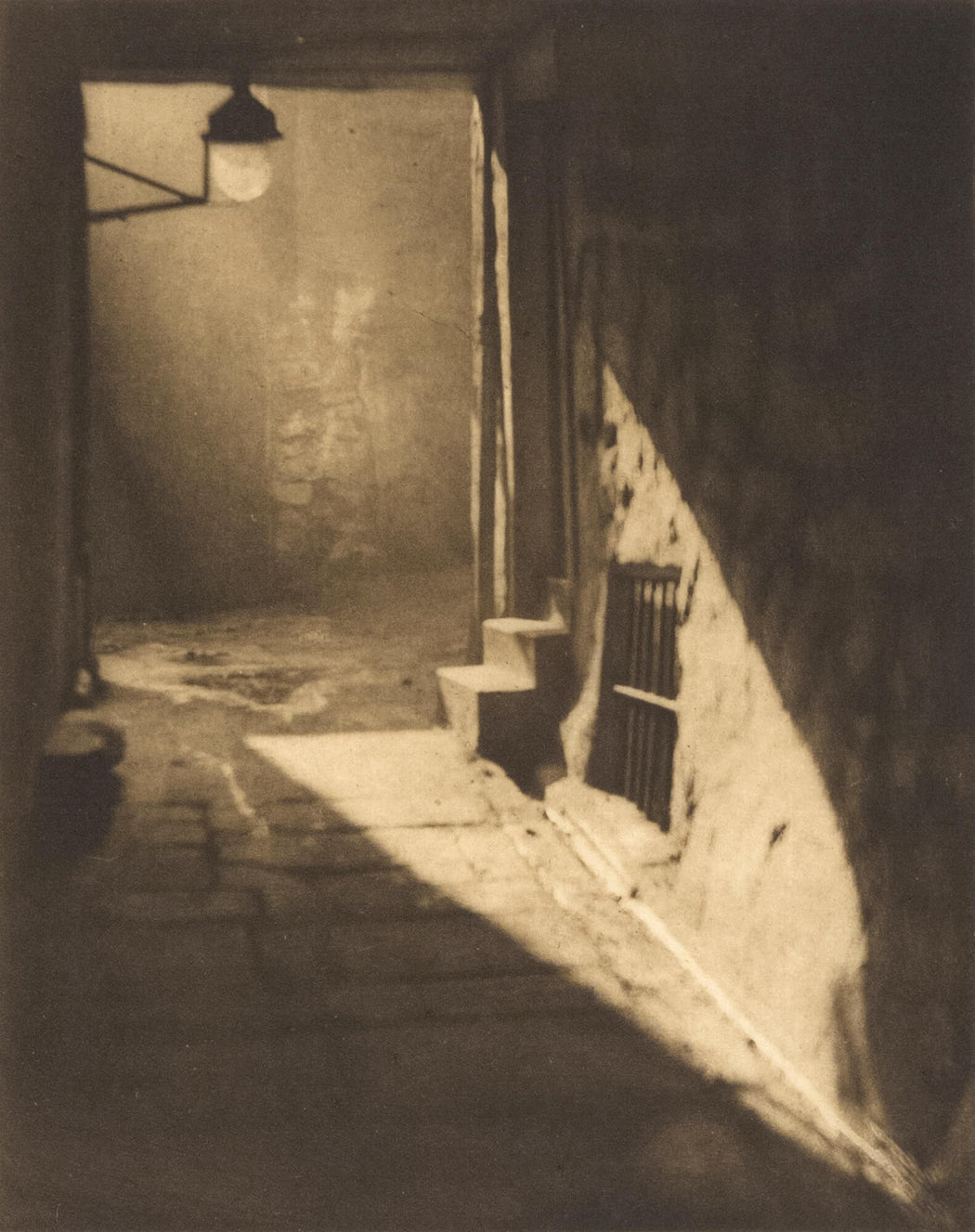
Alvin Langdon Coburn
Weir’s Close by Alvin Langdon Coburn
 Toronto, ON)
Toronto, ON)
Learn about our Shipping & Returns policy.
Have a question? Read our FAQ.
- Artwork Info
- About the Artist
- About this Photograph
-
circa 1905
Photogravure on tissue
Published in Camera Work (15:5), July 1906 -
Born in Boston and eventually becoming a British citizen, Alvin Langdon Coburn (June 11, 1882 – November 23, 1966) was an early 20th-century photographer who became a key figure in the development of American pictorialism. He became the first major photographer to emphasize the visual potential of elevated viewpoints and later made some of the first completely abstract photographs – Vortographs – using a kaleidoscope-like attachment that he invented for the camera.
While still a young man, his photography attracted the attention of Alfred Stieglitz, who included Coburn’s compositions in editions of his seminal photography journal, Camera Work (Issue Nos. 3, 15, & 21). Cultural luminaries were captivated by his photographs, with George Bernard Shaw declaring in 1907 that the 24-year-old Coburn was, in his opinion, “the greatest photographer in the world”.
By 1930, as mysticism and Freemasonry gained a greater hold on Coburn’s attention, he lost almost all interest in photography. That year he destroyed practically all his life’s work – approximately 15,000 glass and film negatives – and donated his extensive collection of contemporary and historical photographs to the Royal Photographic Society.
Despite dedicating his focus towards a spiritual life after 1930, Coburn would still occasionally make photographs. These rare, later photographs are highly sought after by collectors.
Adapted from Wikipedia.com - In September 1905, Coburn took a break from the portrait project he was pursuing in London and visited J. Craig Annan in Edinburgh. There, he saw not only Annan’s work but also photographs by the pioneering painter/photographer team of David Octavius Hill and Robert Adamson—portraits and city views taken in 1840s Edinburgh and originally printed in shades of ruddy brown with strong contrasts of light and shadow, an aesthetic echoed in Weir’s Close. In his 1966 autobiography, Coburn recalled another influence on such pictures: Robert Louis Stevenson’s Edinburgh: Picturesque Notes (1879). “For over fifty years I have followed lovingly in his footsteps, endeavouring to see it as I thought he saw it.”
This photogravure was originally included in a copy of Issue No. 15, July 1906, of Camera Work, Alfred Stieglitz’s ground-breaking photography journal.
Source: Metropolitan Museum of Art


